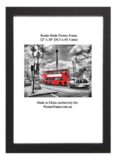![]() Ah! Indian Silk Paintings! We would be quite surprised
Ah! Indian Silk Paintings! We would be quite surprised if anyone did not know of them or about them. Certainly, we, as picture framers are well acquainted with these works of art, or at least, their facsimili. Bold, beautiful, elaborate, colourful, intricate and highly detailed, exuding, if not dripping, in and with timeless Muslim, Buddhist, Hindus, Muslim, Jain and Sikh traditions, folklore, fairy tales and storytelling . Alas, let's begin by the stating the obvious, Indian silk painting refers to paintings painted on silk, muslin, very thin cotton or cloth. The silk fabric, called Paat in eastern India, Pattu in southern India and Resham in northern part, is a natural, organic, fibre made from the mulberry silkworm cocoons by the ancient process of sericulture, or silk farming.
if anyone did not know of them or about them. Certainly, we, as picture framers are well acquainted with these works of art, or at least, their facsimili. Bold, beautiful, elaborate, colourful, intricate and highly detailed, exuding, if not dripping, in and with timeless Muslim, Buddhist, Hindus, Muslim, Jain and Sikh traditions, folklore, fairy tales and storytelling . Alas, let's begin by the stating the obvious, Indian silk painting refers to paintings painted on silk, muslin, very thin cotton or cloth. The silk fabric, called Paat in eastern India, Pattu in southern India and Resham in northern part, is a natural, organic, fibre made from the mulberry silkworm cocoons by the ancient process of sericulture, or silk farming.
Nowadays, the yarns thus produced are used to weave a variety of textiles, including silk paintings. In the Indian subcontinent, silk is a luxury cloth. Nearly all of it is produced in Indian states of West Bengal, Tamil Nadu, Karnataka, Andhra Pradesh, West Bengal Jammu and Kashmir.
The regions of Hyderabad in Andhra Pradesh and Gobichettipalayam in Tamil Nadu were amongst the first to develop silk reeling units. For centuries, silk paintings have been traditionally painted throughout India and southern Asia. While techniques and methods vary greatly, this art broadly entails using traditional silk, or like fabrics, either either loose or stretched in a stretcher frame, and applying textile colours, paints or dyes.
Why Indian Silk Paintings Need Mounting
These special, hand-made silk paintings vary greatly in texture, grain, weave, format and size. So far as the custom picture framing of these, and particularly with sheer, loose, unmounted silks, picture framers are often presented with a mounting challenge as to how to best and successfully display them.
But in many cases this is eminently possible, as evidenced by the the two, large ( 120 x 80 cm ) pieces below which we recently custom framed for a Nepalese Customer :
When our Customer brought in the two above Indian silk paintings, she was very dubious about the prospect of getting them successfully custom framed. This is because the pieces were very fragile, paper-thin, in an awful state, both badly cockled, wavy, dog-eared, wrinkled and creased, far worse than the two examples show below:


Additionally, the two silks were also not painted symmetrically, and were noticeable trapezoid and askew much more than the example below:

In discussing this framing project with the Customer, canvas stretching was initially canvassed as a first choice. Unfortunately, and as it is often the norm with this art genre, the material was simply too thin to safely grip it and tightly pull it so as obtain flat, even and smooth surfaces.
Doing so would most likely have resulted in rips, holes, tears or similar, destructive damage. We then had one of our senior, most experienced, picture framers review the project and he suggested adopting the wet-mounting method.
We have previously published information about this time-tested and well-proven procedure in the post " Picture framing wizardry and the secrets of mounting ". This is essentially a simple enough method.
Acrylic glue is rolled onto a flat surface or wooden panel, the artwork laid on top of it and then the whole "sandwich" is vacuum-pressed either in a cold vacuum press, or a heat vacuum press, if using self-adhesive foam-board.
While this sounds straightforward enough, getting the artwork to lay and settle properly onto its wet or dry adhesive is a highly skilled task, best tackled only by experienced picture framers. A small mistake in laying the art and timing it could lead to a bubbly, wrinkly, creased and sticky mess which would, more than likely, irremediably ruin a Customer's artwork.
How To Mount Indian Silk Painting
Thus, Customers wanting, seeking or needing to specifically wet-mount and vacuum-press artwork, ought to perhaps seek out older, experienced picture framers.
We suggest this because there seems to be a a preponderance of salespersons selling self-adhesive foamboards or other self-adhesive boards generally resembling the one below:

These sleek, sharp, modern, frequently suave, salespersons often visit our establishment seeking to convert our Staff to the wonderful new world of self-adhesion. They invariably extol the ease, and simplicity of application as well as the convenience and relative cheapness of these products.
They indefatigably propound to all concerned that these self-adhesive foam-boards are indeed the salvation or panacea for and to all mounting problems. According to their salesmanship gospel, the chemistry and technology of self-adhesion miraculously solves all mounting difficulties for any and all materials.
Wonder boards, Magic boards, Tarzan boards, Ultra boards, and what have you, it seems that there's nothing that these boards are not capable of. But, we know better.
The problem with self-adhesive foam-boards, as with most self-adhesive products, is that, in our experience, they all tend to fail, sooner or later. And how do we know? Because Customers bring back to us their ruined artwork bubbling and peeling due to adhesive failures and ask us to fix them.
The photographs below of a "ruined-by-bubbles" Transformers poster below is an apposite example:

Now, when we say that Customers should be careful about mounting methods and perhaps seek out the advice more experience picture framers, it's because, in our experience, the wet-mounting with vacuum-pressing has never, ever, failed us in half a century of picture framing.
And to be fair, we did, initially, trial dry-mounting using self-adhesive foam-boards. While this was reasonably good enough for small-sized art, say up to about A3 size, cold mounting and vacuum pressing larger pieces with self-adhesive foamboards resulted partial failures, always evidenced by the tell-tale bubbles under the artwork.
Re-vacuuming and applying heat to the affected areas did ameliorate the artwork finish somewhat but for us, this was enough and we have not used them since. The product's brand and maker we used shall remain nameless, but is was a well known brand.
Perhaps one last, obvious point that needs to be mentioned, is that Indian silk painting generally need custom framing. However, and probably because of the expense, some Customers suggest framing them in ready-made picture frames or want to buy off-the-shelf poster frames to do so. However this is not at all advisable.
The main reason for this is that even if appropriate frame sizes could be found ( and almost all the silks that we have handled were of odd, non-standard sizes ) the silks would certainly puck, crumple, and cockle under the glass.
And this would be simply because Customers aren't picture framers, and thus would not have the knowledge, experience, skill and machinery necessary to accomplish the successful mounting of these textiles.
Thus we end by repeating what we said at the beginning of this post. The picture framing if Indian silk paintings is often best handled by older, more experienced, picture framers.
What To Do and Not To do with Indian Silk Paintings
| List of Do's | List of Don'ts | ||
| ✓ | Do take the silk painting with you when getting it custom framed. The picture framer will want to physically inspect the media, the material and its texture before proffering custom picture framing quotation. | ❌ | Don't be tempted to stick an Indian silk painting in a ready-made frame or off-the-shelf frame, no matter who it's bought from. If the silk is not properly mounted, it will look cheap tacky, and tawdry. Either get it properly framed or keep it unframed. |
| ✓ | Do keep them flat rather than rolled up or folded. Even textile sometimes do not mount or stretch level, even or completely flat if a fold, crease ore curve does not flatten. | ❌ | Don't think that you can buy a department store frame and tape an Indian silk to it. Taping won't work because the silk, or cloth expands and contracts with humidity and temperature changes. This will cause the silk to buckle, ripple and cockle, making quite unattractive to look at. |
| ✓ |
Do get them framed as soon as you can. Not only it's a bad idea to keep silk paintings rolled in tubes for years, but silverfish, spiders, insects and other pest feel right at home living and breeding in dark, forgotten and secluded niches. |
❌ | Don't be tempted to mount an Indian silk painting as D.YO. using a self-adhesive foamboard. The silk will most likely start adhering before it's fully flat and smoothed and will wrinkle up on you. Even professional picture framers find it difficult to use these boards and prefer wet-mounting. |
| ✓ | Do get them glazed as well as framed. Some Customers dislike glazing as they feel it spoils the look and feel of hand-painted art. However most of the Indian silks we frame are quite dainty, delicate and often painted in whites, glitter, silver and gold foils. These media are best protected by glazing. | ❌ | Don't pester a picture framer for discounts when wanting an India silk painting framed. In the first place it can be difficult to find a framer who will do the job, and in the second place, one with sufficient skill and experience to properly mount it and frame it for you. |









Thank you! What a brilliant post about framing these beautiful but very-awkward-to-frame sub-continent silk paintings. Three picture framers I visited insisted I adopt their very expensive stretcher-frame + floating-frame + museum glass options for hundred of dollars. When I suggested that the silks could simply, quickly and cheaply glued and framed, they all threw their hand up in the air in horror warning me that it couldn’t be done because the glue would seep or stain through the silk. Yet here is a picture framer who says that he can do exactly that. Well, here’s an update. I went to see him last week and got him to do my three silks which I picked up yesterday. He did a beauuuutiful job at a much cheaoer price than the others. Well done, Eastleigh Frames!
Readers will undoubtedly espy the writer’s experience, sagacity, knowledge and enthusiasm by and within the works that you write. The digital, global amphitheatre yearns for more knowledgeable and passionate writers such as yourself who are unafraid to explore, analyze and propound what and how the satisfactory picture framing of Indian silk paintings may be accomplished. Verily, at all times you ought to follow firstly your mind, and secondly, your heart. “Man is the measure of all things” Pythagoras is reputed to have uttered, but, I daresay, experience may well have been his is wet-nurse.